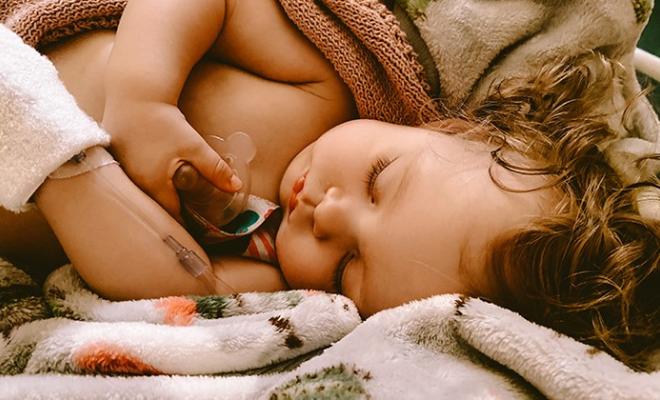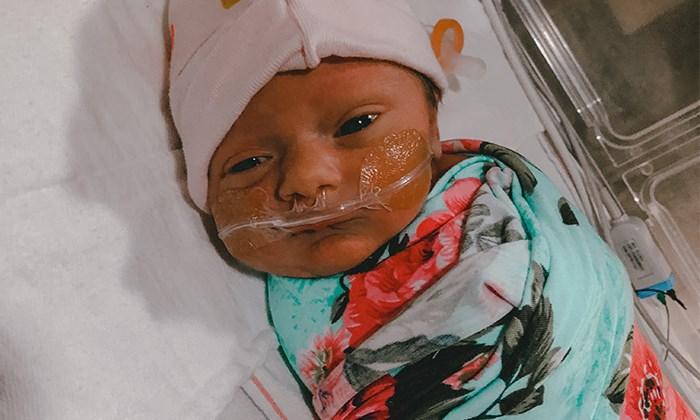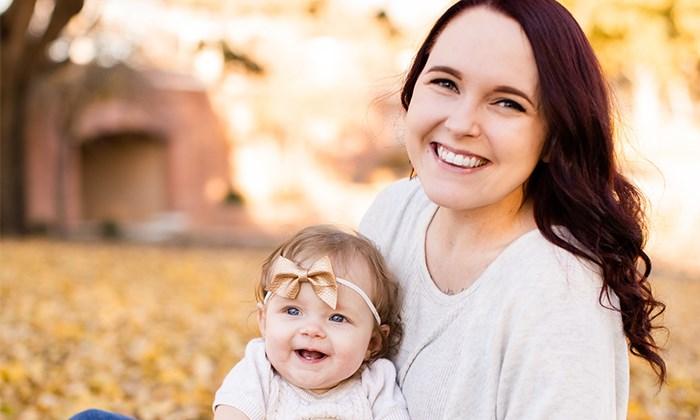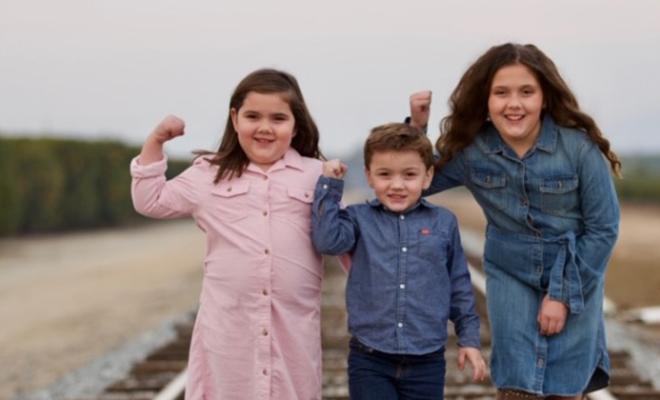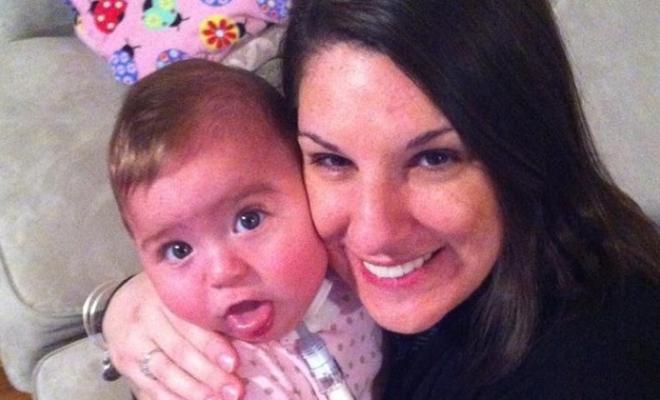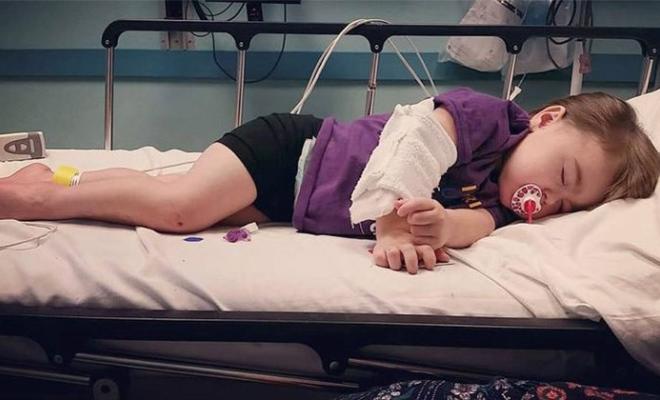The day my daughter Paisley was born, our world came to a screeching halt. At the start of a quickly raging pandemic, my sister rushed me to meet my husband Austin at the hospital after my water broke at her home. In a time meant for joyous and anxious excitement loomed a dark, heavy cloud. In the coming hours, hospitals would be shutting down.
Rattled by a fear and uncertainty that swirled around us as the new virus ripped its way through our community, I braced myself for what I knew was going to be the biggest battle yet to come -- delivering a child with cystic fibrosis into a world ravaged by a disease of which very little was known. After months of planning and consulting with all the appropriate specialists and physicians, we knew the stakes we were coming up against. We understood our daughter would be born with a high risk of complications, an abundance of medical interventions, and a disease technically deemed life-shortening.
Maybe I was naïve to think how quickly I would have all the aspects of being a mother and caregiver locked down, but a few minutes after Paisley arrived, I was truly faced with how delicate our situation was. Just as quickly as she was born, my child was rushed into the NICU, bagged with oxygen, and handled by at least a dozen medical staff along the way. She had passed meconium while still in the womb, her breathing was ragged, her skin blue, and her belly distended by what doctors feared was a bowel obstruction.
It would not be until later that afternoon, that I would finally hold my child for the first time. Tucked away inside the smallest NICU pod I could ever imagine was my tiny five-pound baby, connected to a number of wires and IVs, with a tube channeling down her throat. Paisley looked so fragile; her chest heaving quickly in and out as if every breath was more strenuous than the last.
In the midst of it all, our families and friends were eagerly awaiting visiting -- something that would unfortunately not happen for months. There were no visitors allowed into our pod, regardless of their COVID-19 status. Lonely is an understatement when it comes to describing how it felt sitting in the isolated and suffocating NICU pod. There were no windows, and every room was darkened with little-to-no available light. Any staff members that entered the room stood in the farthest possible corner -- beyond six feet -- unless handling Paisley with double-gloved hands and coverings from head to toe.
Having to continuously reject any request for visits, even after leaving the NICU, left a weight on my heart that grew harder and harder for me to release. It was not that we wanted to hide our baby away from the world forever -- just the opposite. We wanted to share her with everyone and give her many of the same experiences her father and I had growing up as children, especially knowing her life could possibly be shortened and there was no time to waste.
But we were scared.
Our fears came down to being more than just about the pandemic. All our nightmares were wrapped up in all the invisible bacteria, respiratory infections, and seasonal bugs that posed constant and detrimental risks to our daughter. When topics become politically charged, Austin and I found that the outside narratives surrounding our decisions frequently fell upon comments like, “This is all just because of COVID-19,” and “She looks healthy to me,” or even, “Maybe she'll outgrow it.”
On one hand, I wanted so desperately to protect my child to give her the best shot at a lengthy life. On the other hand, I felt like I was failing to give my daughter those personal and close interactions with the people who loved her.
I knew my daughter could never be like most kids who could just “throw some dirt on it” and let their bodies do the work, overcoming infections on their own. She's just not built that way. Yet, some of the comments made -- and the disregard for our decisions to physically distance or decline certain social situations -- made me question if what I was doing was right, or if my child and loved ones would soon grow to resent me for having built such a thick boundary between them.
The first time my daughter came down with pneumonia was in December, and the 104-degree fevers, lethargy, and labored breathing had Austin and I feeling anxious to take any further risks. We made a few tough calls, canceling certain holiday plans with loved ones whom we knew had been sick or had been exposed to others who were ill. The messages I received at the time were hurtful, registering us as people who made false promises and avoided letting others develop relationships with our daughter. I carried the full weight of those words on my heart for a very long time. I knew to my core what I was doing was deeper than protecting my child from a pandemic that would or would not quickly pass, but it seemed difficult to explain just how scary the world had become in general because of CF.
A few short months later, my daughter was handed what her doctors called a “triple threat.” Her second case of pneumonia and Methicillin-resistant Staphylococcus aureus and Pseudomonas, shortly after her first birthday party. Prior to this point, we had decided to loosen our grip on the extensive protective measures leading up to her birthday celebration. We were tired and battered by the fists of physical distancing, missed opportunities for visits, and deteriorating relationships. We wanted to feel like a part of the world again, but the sudden and extreme onset of the triple infections not only threw us into our first hospitalization for heavy and extensive IV medications, but it also locked us down in a three-month strict isolation.
By this time, I was 35 weeks pregnant with my son and doctors laid it out for us plain and simple: Take the isolation seriously so we could kick these infections to the curb without chancing cross-infection or run the risk of delivering a newborn child with cystic fibrosis into an incredibly dangerous environment full of bacteria built for chronic infections.
What seemed like the worst-case scenario eventually led to the revelation we needed to fully establish and communicate how vital it was in our circle to respect and continue maintaining the boundaries we had made. Seeing our daughter fall so severely ill and condemned to months of isolation from the world painted a vivid picture of the complexity and delicacy of living a life with cystic fibrosis, of how quickly matters can change and knock us back a dozen paces, and of the boundaries necessary to promote our children's health even after the end of the pandemic.
The next three months passed in a whirlwind of welcomed change and common understandings. We hit a groove in establishing new means of communication and sharing experiences that were a better fit to our dynamic.
We fully embraced the adversity of video chats, saying hello from across the street, and ding-dong-ditching toys and packaged goods to front doors. We opened our daughter's window to the surprise of her room being filled with balloons by her Tío and Tía from a safe distance.
We were illuminated by our loved ones, who lit and shared prayer candles as a reminder that everything falls into God's plan. We felt the utmost amount of love and support from our pediatrician's office, whose physicians and staff wore cystic fibrosis awareness shirts in honor of our girl the day we came home from the hospital. Our church family delivered meals to our front step and coordinated a meal train so we would not have to cook or brave the supermarkets, and could take advantage of the preciously rare moments of welcoming another newborn into our home.
In this chapter of our lives, our love is spread apart, and sometimes we do not always have the opportunity to hug, kiss, or say thank you to our people in person. We do things unconventionally, but what is undeniable is knowing this community we have established will always rally for our children -- our CF fighters -- by any means necessary and in any shape possible. Our village has grown -- both in strength and in union -- and how thankful I am for their understanding and eagerness to come to our aid whenever we need them the most.
Interested in sharing your story? The CF Community Blog wants to hear from you.

